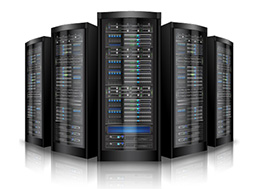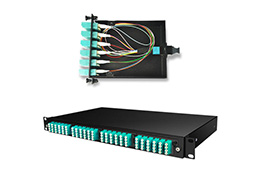
A Local Area Network (LAN) is comprised of multiple networking equipment’s like network switches, routers, UTM appliances, Servers, patch panels, cables, modems, etc. These equipment’s are generally kept inside a network rack, which is a closed or open enclosure that can hold them. The size occupied by networking hardware equipment’s follow certain industry standards so that they could fit in to the network racks, which too follow those standards. The common width of a network rack (and the networking equipment’s) is 19″ (Inches) – most of the racks are made to accommodate any equipment that can fit in to this space.

Fiber optic splice enclosures are used to protect stripped fiber optic cable and fiber optic splices from the environment, and they are available for indoor as well as outdoor mounting. Outdoor fiber optic enclosures are usually weatherproof with watertight seals. In a typical wall-mounted splice enclosure, fiber optic cable is supported by cable ties, and the cable strenght member is securely fastened to the enclosure’s support. Metallic strenght members must be grounded securely

When most people hear of fiber optic cables being used for their internet services, they may not know what their telecommunications company is referring to. A fiber optic cable is one that has glass fibers which are inside an insulated casing. The purpose of a fiber optic network is to reach longer distances and provide a higher performance than that of wired cables. Wired cables do not have the capability to have a large bandwidth and cannot transmit data over long distances. Fiber optic cables can support larger bandwidths and provide connectivity for much of the world’s internet and television.

Widely implemented UTP wiring consists of two insulated copper wires which have been twisted around one another. The abbreviation UTP stands for “Unshielded Twisted Pair”. The twisting of the wire pairs helps to control signal degradation due to interference. Network connections with short to medium length requirements can utilize UTP cable. This cable type is also found in some video applications. UTP Network Cable Categories support a range of data transmission speeds. A complete UTP system will utilize components within a specific Category, including compatible cable, jacks, patch panels, and patch cords.

A patch panel in a local area network (LAN) is a mounted hardware assembly that contains ports used to connect and manage incoming and outgoing LAN cables. Patch panels bundle multiple network ports together to connect incoming and outgoing lines — including those for local area networks, electronics, electrical systems and communications. When patch panels are part of a LAN, they can connect computers to other computers and to outside lines. Those lines, in turn, allow LANs to connect to wide area networks or to the Internet. To arrange circuits using a patch panel, you simply plug and unplug the appropriate patch cords. Troubleshooting problems are simplified with patch panels since they provide a single location for all input jacks. They’re frequently used in industries that require extensive sound equipment because they work well for connecting a variety of devices

Network Input/Output is essentially just time attributed to sending data between monitored processes. If it's a slow network, there's large data transfers, or it's very talkative that can be high. I'd look at some individual PurePaths to see exactly where all of that time is spent.